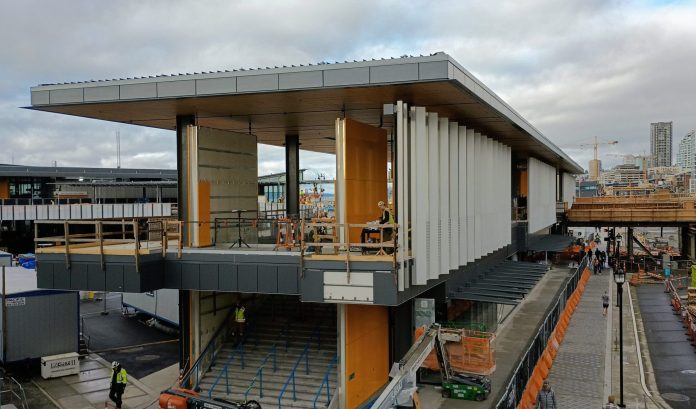
On a quiet weekday in November, daily passengers at the Washington State Ferries’ Colman Dock stopped using a makeshift terminal to board ferries to Bremerton and Bainbridge Island and instead boarded from a brand new 20,000 square foot terminal, an effort years in the making.
The new building, which includes seating for 362 people, dramatically expands the waiting area compared to the previous cramped, dark building. It includes two sets of public restrooms, and sweeping views of both Downtown Seattle and approaching ferries in Elliott Bay. That morning, there was no ribbon cutting, and no elected officials posing for the TV cameras. It was just another day at the busiest terminal in the entire state ferry network.
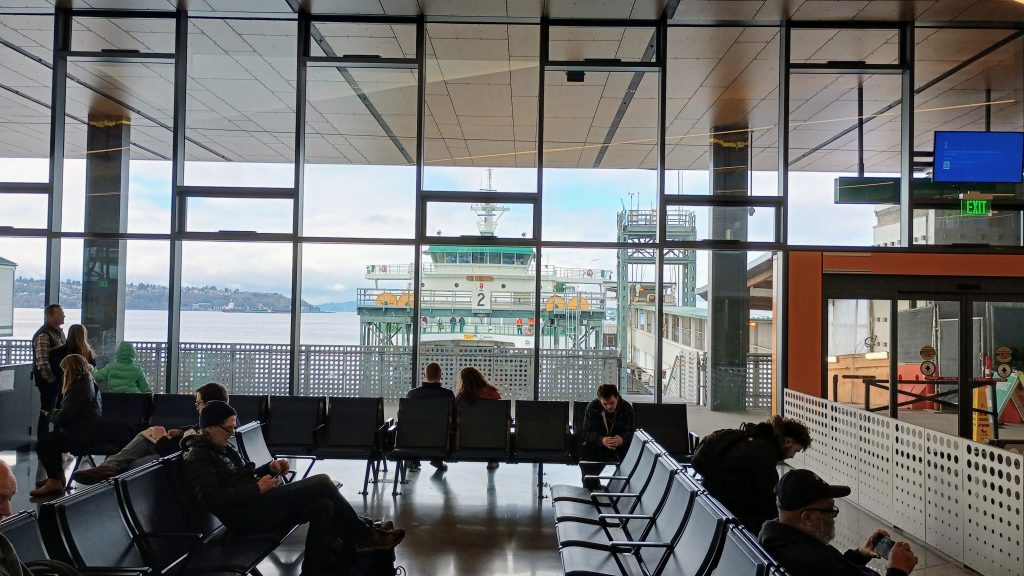
That lack of fanfare was primarily due to the fact that the entire $467 million revamp of Colman Dock is still not done, with work still remaining on an “entry building” along Alaskan Way, connected to the terminal by pedestrian walkway. That building will incorporate retail into the facility, and is currently planned to open later this year. After that, a new pedestrian bridge will open on Marion Street, taking the place of the current temporary one on Columbia, will connect the terminal directly to First Avenue just like it did before the Viaduct’s removal.
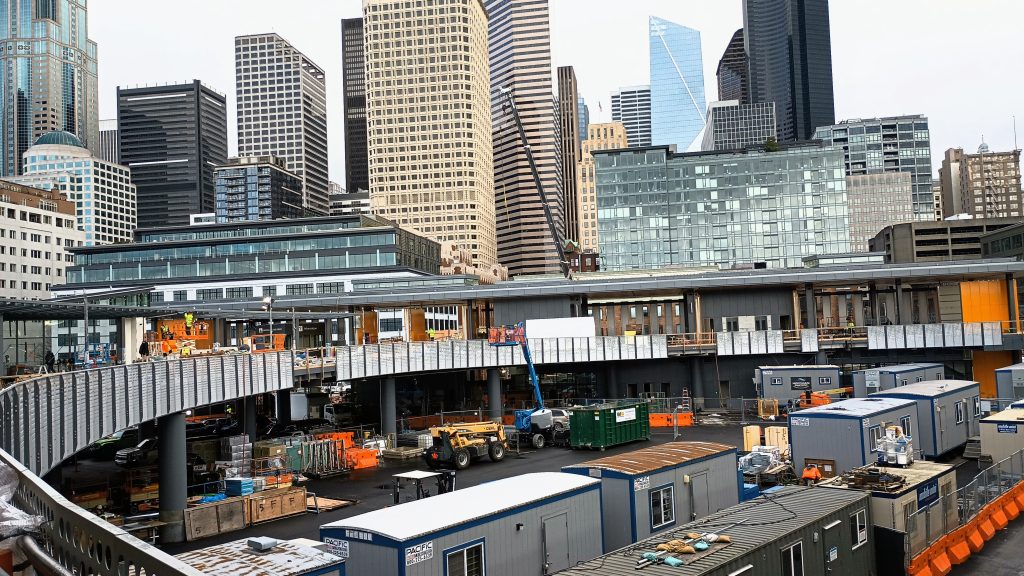
The overhaul of Seattle’s flagship ferry terminal, while not directly related to the demolition of the Alaskan Way Viaduct and the overhaul of the Seattle waterfront in the viaduct’s old shadow, has been nonetheless essentially tied at the hip to the project, with Colman Dock envisioned as a new focal point for travelers coming through downtown, particularly those not in cars.
The idea of the dock as a “multimodal hub” has been developed in conjunction with the rest of the waterfront, both in terms of logistics and opportunities for integration. The decision to route buses coming from West Seattle to a transit corridor on Columbia Street, rather than through Pioneer Square, further enabled this idea. The ferry terminal is a logical place for users to change modes, enabled by the amenities that the ferry terminal provides.
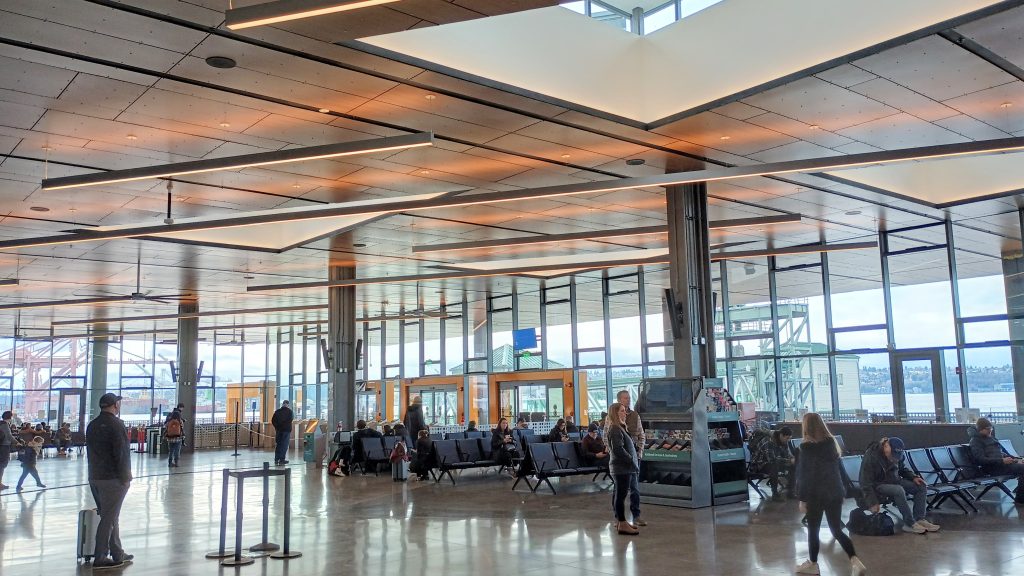
The designs for a new ferry terminal at Colman Dock go back well over a decade. In 2011, James Corner, fresh off the Highline and consulting for the Seattle waterfront redevelopment, proposed what was described by The Seattle Times as “a green rooftop where people can watch ferries and the nearby cranes unloading cargo.” He told the newspaper that “instead of turning its back, the city can embrace a great transportation hub where people coming and going are part of the scene.” The rooftop garden idea was one of the first big concepts to get scaled back, earlier than the cancelled idea for a floating waterfront swimming pool.
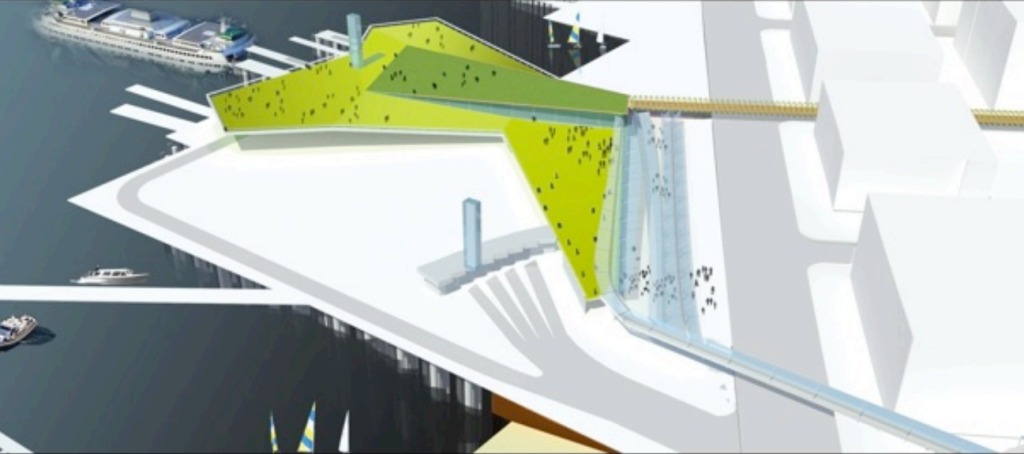
In 2014, the Seattle Design Commission unanimously rejected a proposed 30% concept for the terminal that the body said wasn’t ready to proceed any further. The design was exceedingly simple and bland. “The future of the city is being designed now,” one commissioner was recorded as stating at that meeting. “Seattle is becoming a more open, sustainable, and design-oriented city. This design and strategy are not compelling enough.”
“The ferry terminal can be a real attractor and make a statement,” another commissioner noted. Back to the drawing board.
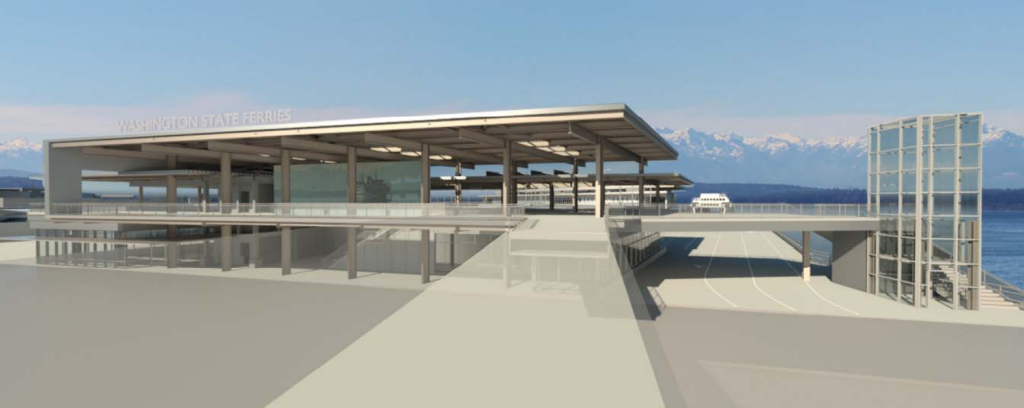
It wasn’t until 2016 that a design close to the one taking shape today was approved, though only time will tell if it truly becomes the “attractor” envisioned. Ferry travelers aren’t going anywhere, of course, and ridership on ferries is only expected to grow. When design work started on a new Colman Dock, Kitsap Transit had not yet launched its fast passenger ferry from Bremerton, with the fast ferries to Kingston and Southworth following in subsequent years. The area as a transportation hub is essentially baked in at this point.
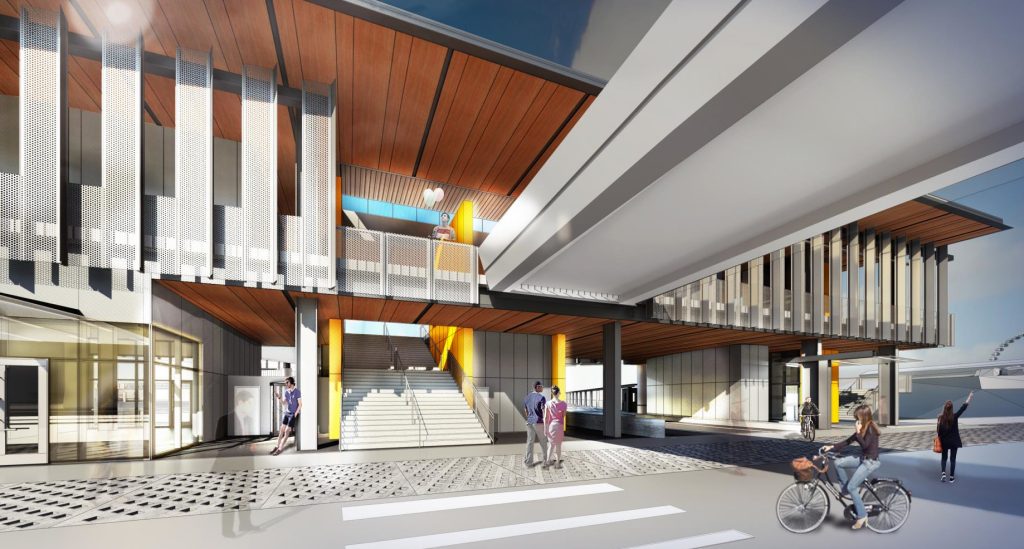
As for other modes, transit riders have to contend with crossing Alaskan Way, the waterfront’s answer to Mercer Street, no matter which direction they’re trying to catch a bus. In March, King County Metro will launch the RapidRide H, turning the downtown-bound stop at Columbia Street into a double frequency RapidRide stop, though unfortunately the H Line will terminate at Third and Virginia, with the C Line continuing on to South Lake Union, making things a little more complicated.
For people biking, the new waterfront trail, still on track to open in 2024, will be a sea change for getting to the ferry terminal, though the unfunded gap in bike facilities on Yesler Way means that a direct, separated connection to the rest of downtown is a bit further out-of-reach.
And for people on foot? Outside Pier 50, passengers exiting the King County and Kitsap passenger ferries at street level will need to cross the lanes of vehicle traffic exiting Colman Dock, because the intersection of Alaskan Way and Yesler Way has been designed without a crosswalk on its south side to funnel that exiting ferry traffic south.
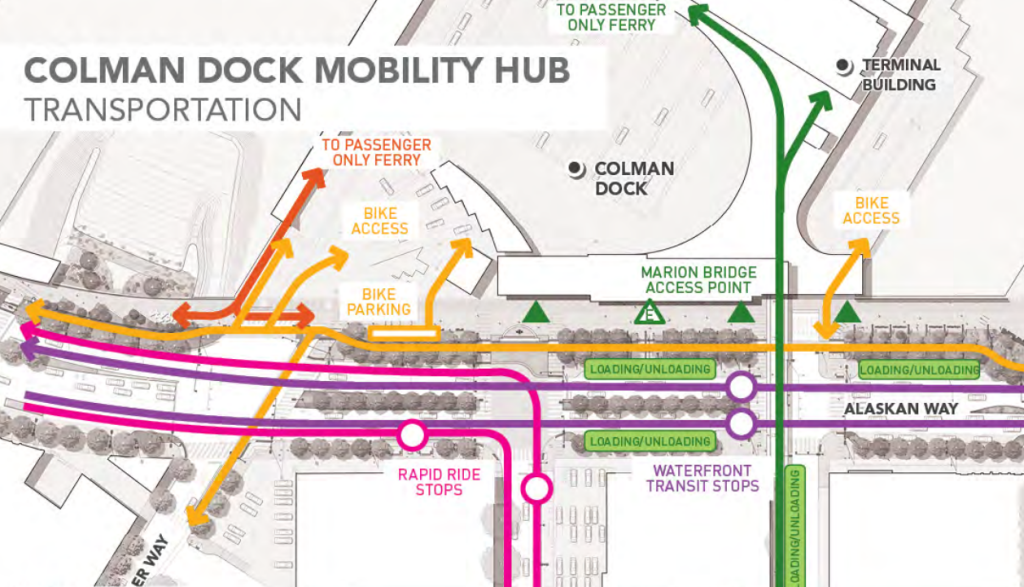
Planning for the Future
Next door to Colman Dock is another piece of property owned by the Washington State Department of Transportation, Pier 48. Not included in the current Alaskan Way corridor redevelopment underway right now, the pier was nonetheless eyed during the design phase, with a number of concepts put forward, including a full remodel of the pier with concert and event space for the waterfront. But the pier is most likely to be utilized as an expansion site for additional passenger ferry service serving Elliott Bay, with the current passenger ferry terminal attached to Colman Dock, Pier 50, essentially at capacity.
Late last year, the Office of the Waterfront confirmed that they were no longer working on any concepts for Pier 48, after they worked with several organizations from around south downtown to create a concept for the property, with help of a grant from the Washington Department of Commerce. That concept envisions a four slip ferry terminal with an expanded public beach and some open space at the shore. But what lies ahead for Pier 48 could end up looking nothing like this, especially after other governments get involved.

The refresh of the downtown ferry terminal, one of the amenities unique to the city that visitors will continue to clamor to see, is welcome and overdue. The new terminal provides room for riders to stretch out, something they don’t get in their cars, and really upgrades the experience heading to Kitsap County. Whether the new terminal achieves the vision of a true “multimodal hub” likely won’t be much to do with the design itself, but how the city prioritizes different types of transportation users throughout downtown and the rest of the city. And on that score, there’s always room for improvement.
Ryan Packer has been writing for The Urbanist since 2015, and currently reports full-time as Contributing Editor. Their beats are transportation, land use, public space, traffic safety, and obscure community meetings. Packer has also reported for other regional outlets including BikePortland, Seattle Met, and PubliCola. They live in the Capitol Hill neighborhood of Seattle.

